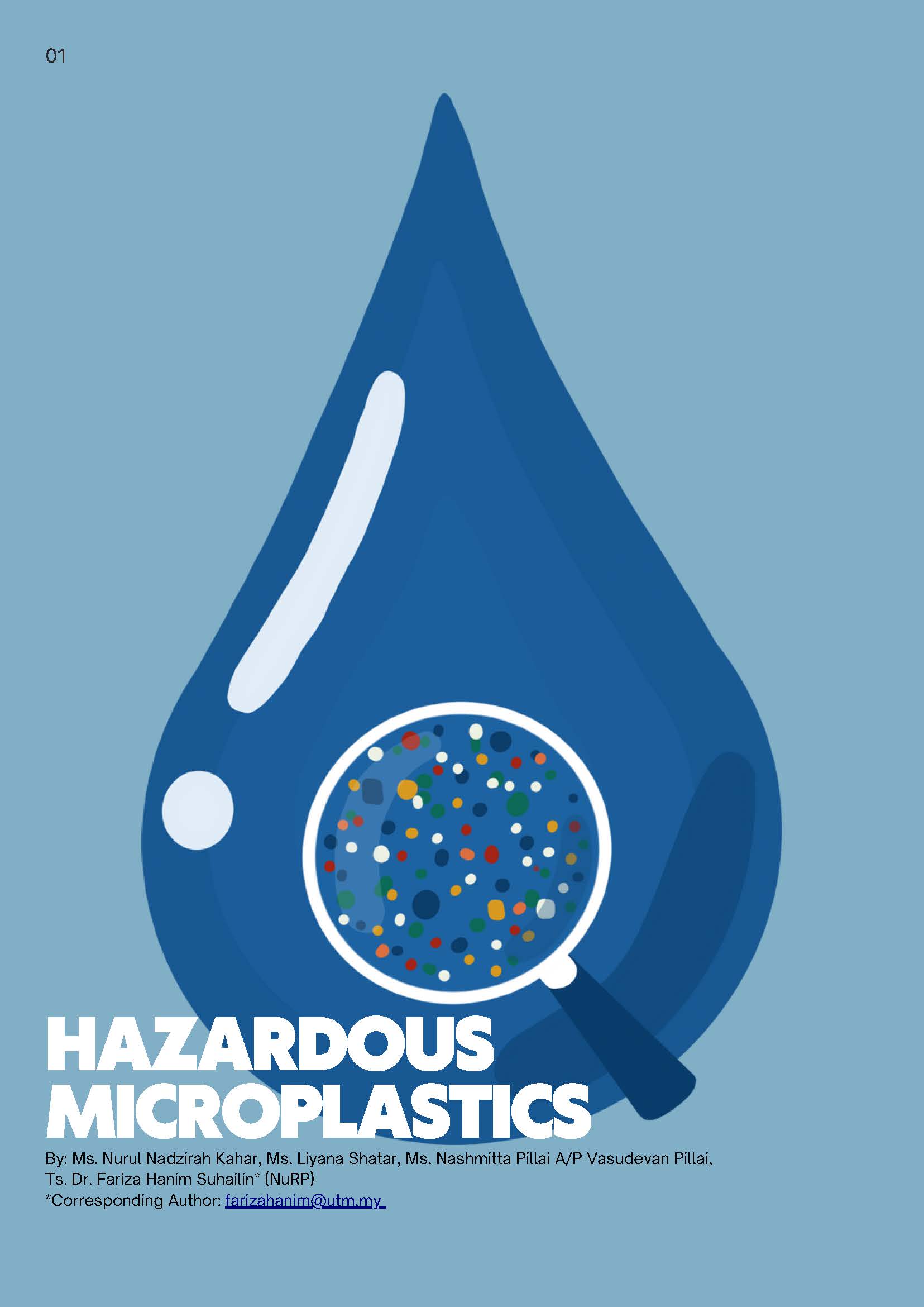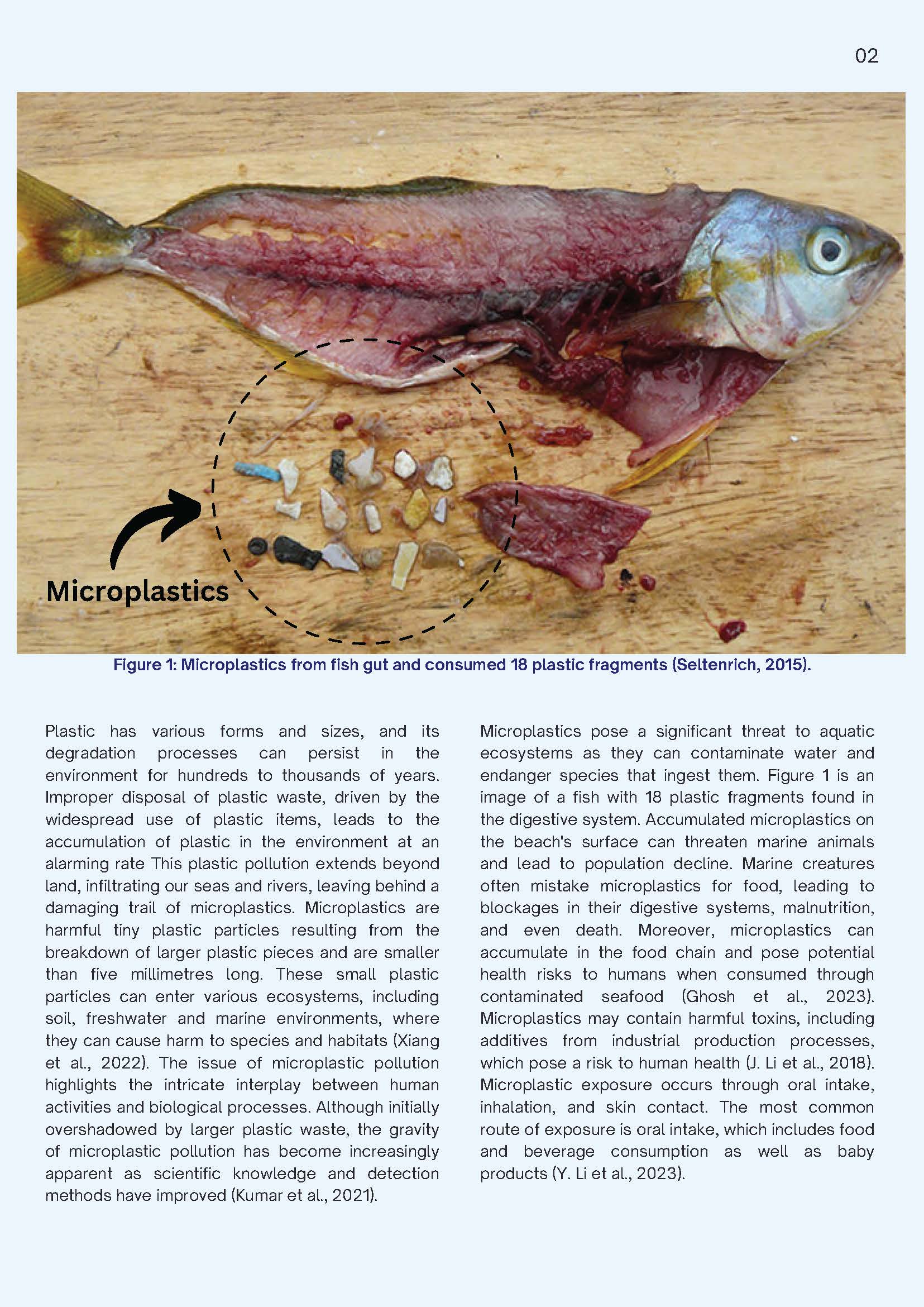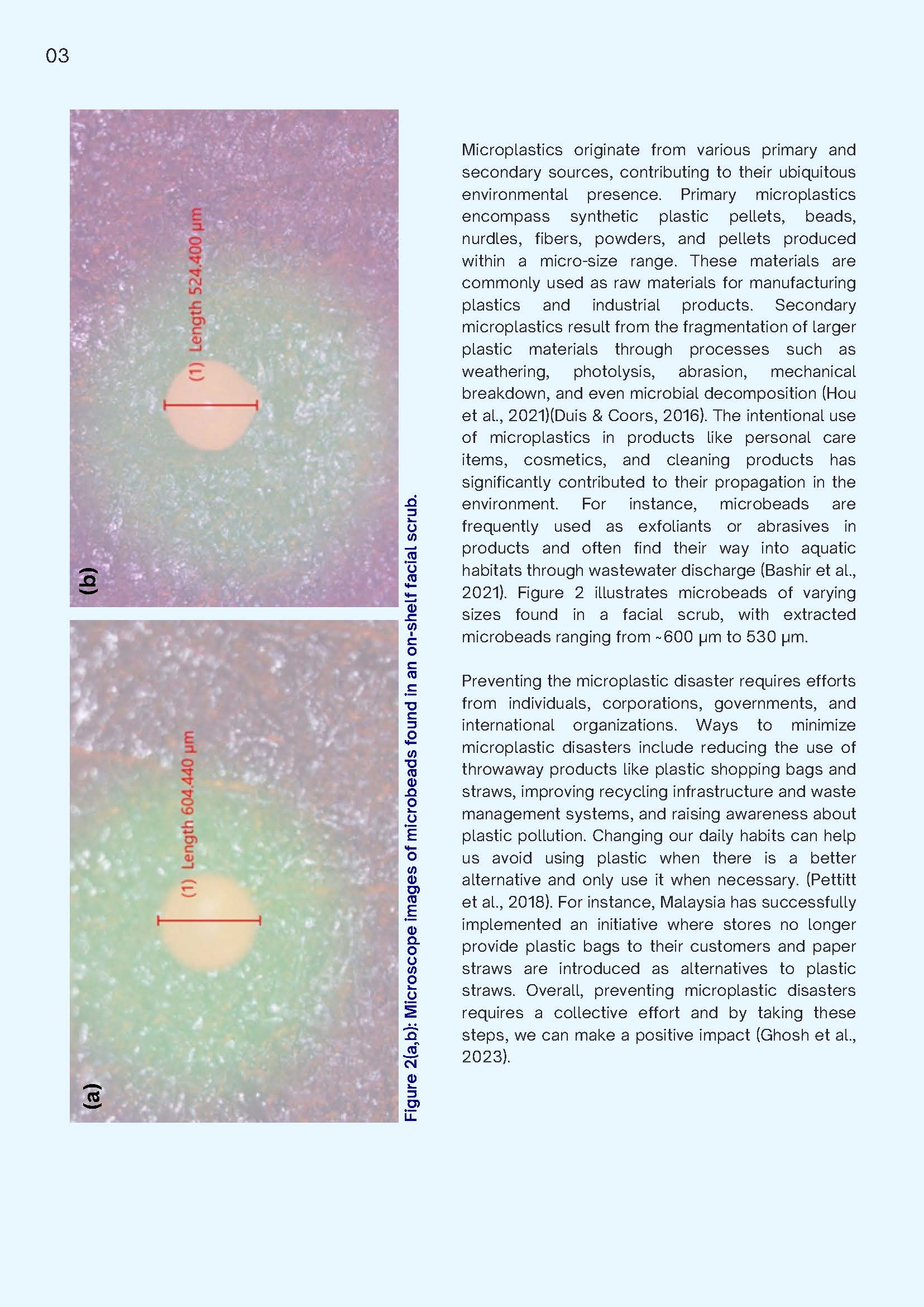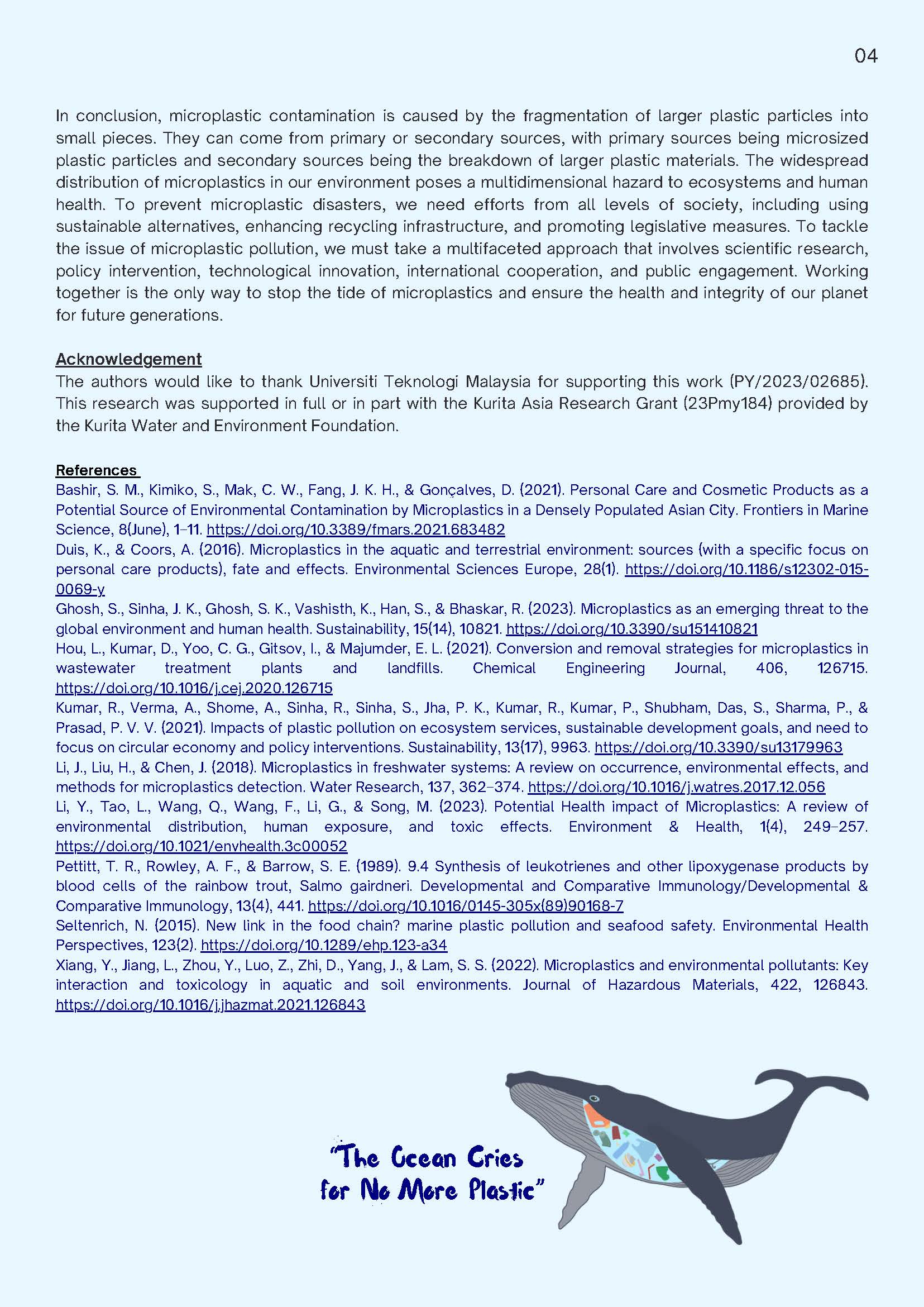🌊 Summary Reflecting SDGs
The article “Hazardous Microplastics” highlights the escalating threat of microplastic pollution to both ecosystems and human health. Microplastics—tiny plastic fragments from primary sources like microbeads and secondary sources like degraded plastics—have infiltrated aquatic environments, food chains, and even human bodies through ingestion and exposure.
This environmental crisis is intricately linked to several Sustainable Development Goals:
-
SDG 3 (Good Health and Well-being): Microplastics carry toxins and pose potential health risks to humans, including through contaminated seafood and consumer products.
-
SDG 6 (Clean Water and Sanitation): The presence of microplastics in freshwater systems undermines water safety and ecosystem integrity.
-
SDG 12 (Responsible Consumption and Production): The paper advocates reducing single-use plastics and improving recycling practices.
-
SDG 14 (Life Below Water): Marine life is especially vulnerable, often mistaking microplastics for food, leading to injury or death.
-
SDG 17 (Partnerships for the Goals): The article emphasizes collective action across individuals, governments, and global institutions to address plastic waste.
The study calls for multifaceted strategies involving research, legislation, innovation, and public participation to mitigate the microplastic crisis and ensure a healthier planet for future generations.
📘 Source
Kahar, N. N., Shatar, L., Pillai, N., & Suhailin, F. H. (2024). Hazardous microplastics. FRESH Newsletter, (April Edition), 1–4. Universiti Teknologi Malaysia. https://science.utm.my/fresh/ | https://online.fliphtml5.com/uwhft/ctfw/#p=1





